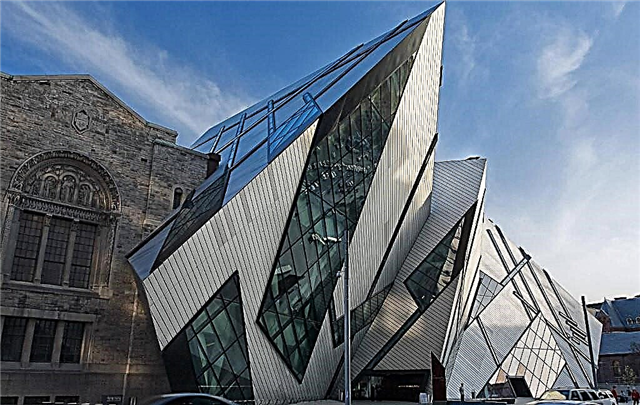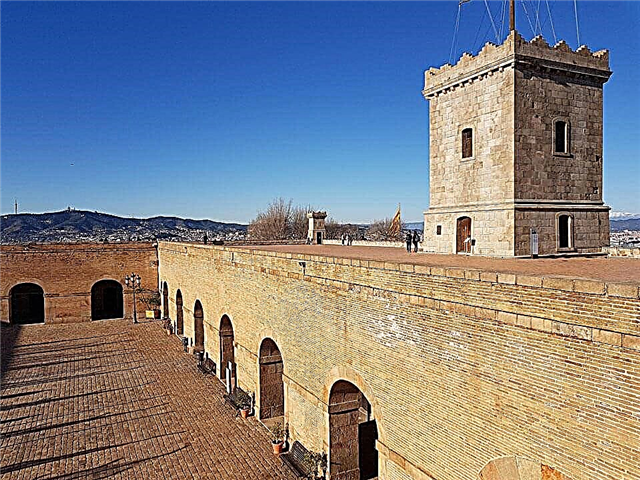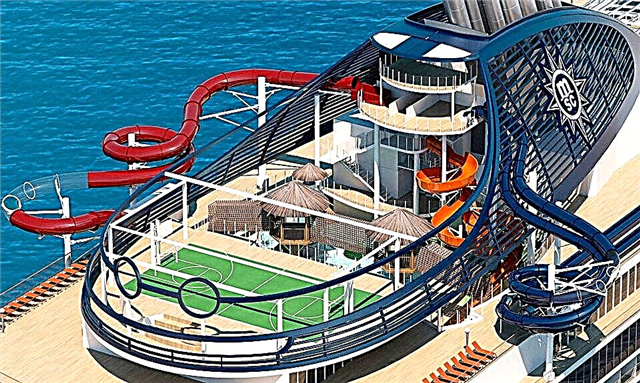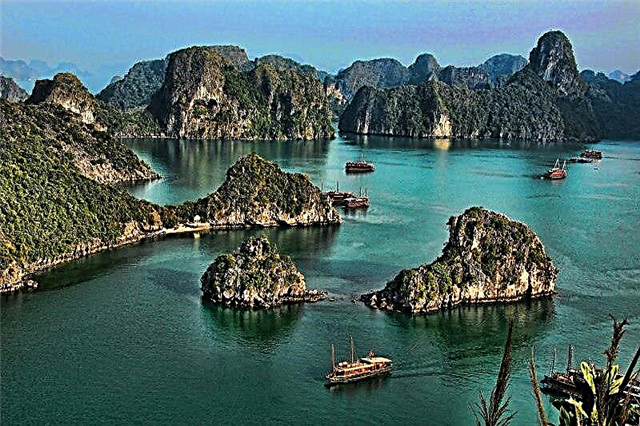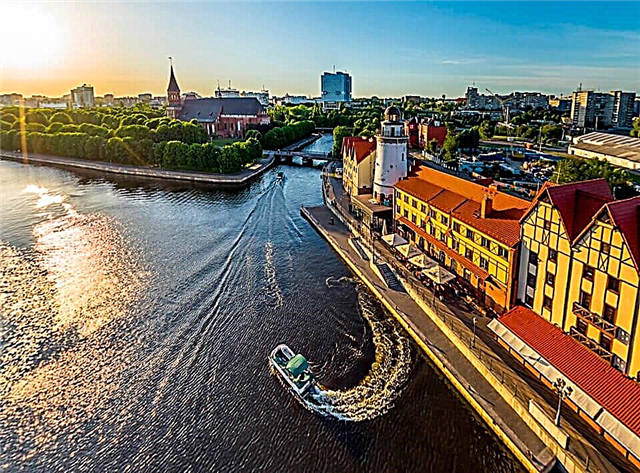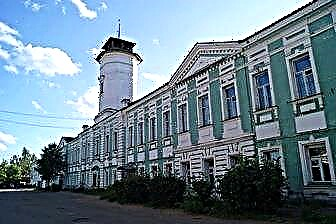Vyshny Volochek received the status of a city under Catherine the Great in 1770, although it was first mentioned in the 15th century. The city is located on an artificially created waterway, the oldest in Russia. Three centuries ago, it connected the Caspian Sea with the Baltic and served as an alternative to the land route between the Tvertsa and Tsna rivers, along which ships were previously dragged. The system of water canals is undoubtedly the main decoration of the city, which is sometimes even called the Russian or Tver Venice.
The historical part of Vyshny Volochok has been well preserved. Its attractions include the Epiphany Cathedral in 1814, the Kazan Monastery in 1881, the Travel Palace in 1779, the Trading Rows, the Magistrate's building and other buildings. And Vyshny Volochek is also famous for ancient art crafts, which are introduced to museums of Russian felt boots and glass.

The best hotels and hotels at affordable prices.
from 500 rubles / day
What to see and where to go in Vyshny Volochok?
The most interesting and beautiful places for walking. Photos and a short description.
Vyshnevolotsk water system
The first navigable canal was built by the Dutch under Peter I. He connected the Tsnu River, which belongs to the Baltic basin, and the Tvertsa, which carries its waters to the Caspian Sea. Subsequently, a large-scale hydraulic system was created according to the project of a self-taught engineer M. Serdyukov. It included several canals, dams, sluices, and a reservoir. The construction eliminated the need to drag ships overland. Surviving objects - Tsninsky, Tveretsky and Obvodny canals, Tsninsky beyshlot and others.

Theatre of Drama
Located in a beautiful historic building in terracotta color with white architectural elements. It dates back to the organization of a drama circle in 1896. The current repertoire consists of several dozen classical performances. The auditorium is chamber, designed for 286 seats. Various festivals are held on the basis of the theater. The building houses a museum that houses collections of theatrical costumes, sets, archival photographs and posters.

Museum of local lore
The funds of the museum, founded in 1932, now number more than 30 thousand exhibits. Exhibition halls area is 1200 m2... Permanent expositions are devoted to the nature of the region, archaeological finds, peasant life and artistic crafts, the history of the creation of the water system, the participation of local residents in the Great Patriotic War. There is also an art gallery in the museum, where canvases of painters painted at the Academic dacha are presented.

Glass Museum of the "Krasny May" Factory
The local glass factory became famous for the Kremlin stars and lamps for the Moscow metro made on its basis. Production is currently stopped. Unlike the museum, which was established at the plant in 1968 and continues to receive visitors. His collection, one of the richest in Russia, includes 4,000 items made since 1870. Among them are mass products and unique works of authorship made of crystal and multi-colored glass.

Museum "Russian felt boots"
Since 1992, the only factory in the country for the production of felt boots has been operating in the city. An entertaining museum was opened with her. Its most unique exhibit is a 2-meter tall tsar-felt boot. Its size is 201st, weight - 52 kg. There are also old devices for felting wool, felted paintings, toys, souvenirs, wooden sculptures and, of course, felt boots of various shapes, colors and sizes. There is a small shop on the territory of the museum.

Kazan monastery
The date of creation is considered to be 1881. The monastic architectural ensemble was formed by the beginning of the 20th century and contains several notable buildings. The majestic Kazan Cathedral, with 13 chapters and rich decor, is one of the most beautiful in Russia. The 5-head Andronikovsky Cathedral and the tallest building with a white-pink facade - a temple with a bell tower of the Monk Ephraim the Syrian and Neonila - are perfectly preserved. Now the monastery is active, for women, visiting is possible on weekends and holidays.

Epiphany Cathedral
The construction of the main Orthodox church of Vyshny Volochek dates back to the beginning of the 19th century. It was erected in an unusual Empire architectural style on the banks of the Tsna River, in the middle of a small island. In the 1860s, most of the building was rebuilt in the pseudo-Russian style. After the revolution, the temple was inactive, but was not destroyed. Opened in 1945. The main treasures are icons of the 17th-18th centuries and academic wall paintings from the 19th century. The church choir of the cathedral is the best in the region.

Monument to Catherine II
In 2007, it was installed in the city center, near the building of the drama theater. The author of the project is the sculptor Y. Zlotya. The height of the monument is 2.8 meters, weight - 1.7 tons. The Empress sits majestically on the throne, with a scepter and a wreath in her hands. The latter symbolizes the royal decree of 1770 on the assignment of city status to Vyshny Volochok. Two years later, Catherine approved the coat of arms with a loaded boat floating on the water and the imperial crown depicted above, signifying the patronage of Her Majesty.

Monument to A.G. Venetsianov
Installed in the very center of the city, on the territory of the Venice Square. Authors of the project - Komov O. and Komova N. The opening took place in 1980. An excellent portrait painter and master of rural landscape, the founder of everyday painting A. Venetsianov lived for some time in the vicinity of Vyshny Volochok. A touching sculptural composition depicts the artist standing at an easel with a palette in his hands, and a peasant woman posing for him with a baby.

Monument to Peter I and Mikhail Serdyukov
It was created in 2006 and adorns the square in front of the train station. The author is a sculptor and artist Yu. It is an expressive sculptural composition 2.5 meters high, installed on a small granite pedestal. It depicts the hydraulic engineer M. Serdyukov, standing in front of Peter I with a project for the future hydraulic system of Vyshny Volochek. This project was approved by the king, as a result of which canals, locks, dams, and a reservoir appeared in the city.

Shopping arcade
Two buildings of commercial premises were built in the city center in the middle of the 19th century, mainly for holding annual fairs. Especially brisk trade was carried on in the summer, after the arrival of ships with goods. Local merchants offered dishes, linen, tobacco, furs, honey, fish, etc. Today, the stalls are an object of cultural heritage. Only one of the buildings has been restored and is used for its intended purpose. The second is in a dilapidated state.

Ryabushinsky's dacha
Located on the outskirts of the city. It was built at the beginning of the last century. A classic example of an Art Nouveau merchant's mansion with carved decor. In addition to the master's house, the outbuilding, part of the outbuildings and old trees have been preserved. The interior of the premises has miraculously survived. Recently, due to the emergency condition, the house was under threat of demolition. But local ethnographers defended the building, and they plan to recognize it as a historical monument and turn it into a museum.

Magistrate Building
Two identical brick buildings in the classical style were erected on the city embankment in the second half of the 18th century, at a short distance from each other. Subsequently, already in the middle of the 19th century, another house with a pillar-like fire tower was built between them. Its facade was made in the style of the previous buildings. And the high tower became the center of a single architectural composition. The original layout of the entire structure has been preserved. Today the library is located here.

Academic dacha named after I. E. Repin
It was built in 1884 on the banks of the lake and the Msta river. One of the most famous creative bases of Russian artists. Repin, Serov, Roerich, Kuindzhi, Levitan were often here. In 1964, the name of I. Repin was given and a monument to him was erected. At the end of the last century, modern workshops, an exhibition hall, a library, and a cinema were created for artists. In summer, creative meetings are held here with the participation of famous writers, artists, and artists. A museum was organized.

Vyshnevolotsk reservoir
Construction dates back to 1719. It is located on the western outskirts of Vyshny Volochok. Area - 108 km2... Part of the water system. It was created to maintain a navigable level in it, in accordance with the project M. In 1951, a large-scale reconstruction was carried out. Today it is used for water supply to settlements, energy, water transport, and fishing. The villages of Kasharovo, Ermakovo, Rvenitsa, Krasnomaysky and others are located on the banks.


